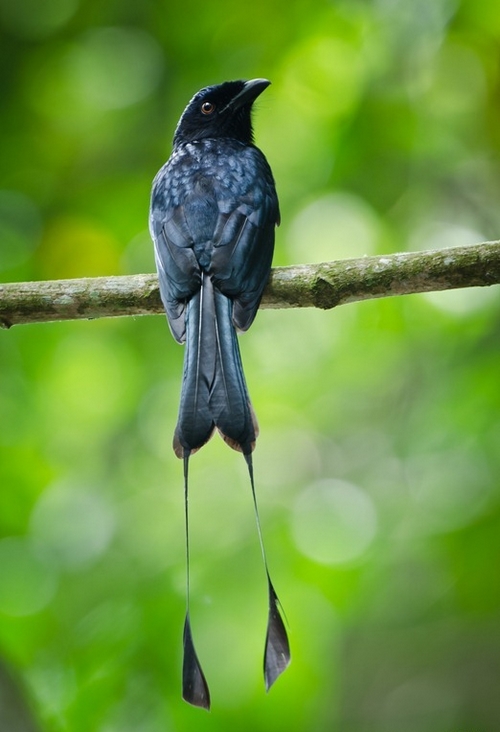A growing number of studies have shown that vocal mimicry appears to be adaptive for some bird species, although the exact function of this behaviour varies among species. Previous research on the Greater Racket-tailed Drongo (Dicrurus paradiseus lophorhinus) has shown that this species uses mimicry in a variety of contexts and in a context-specific manner. But drongos also imitate sounds associated with danger, such as predators' vocalisations or the mobbing-specific vocalisations of other prey species, raising the question of whether the function of mimicry can vary even within a species. Dr. Eben Goodale of Xishuangbanna Tropical Botanical Garden (XTBG) and his colleagues conducted a playback experiment in the Sinharaja World Heritage Reserve (6°26′N 80°21′E, 450–600 m), the most extensive remaining lowland rainforest in Sri Lanka. They tested the hypothesis that danger mimicry functioned to affect the behavior of other species that participate with drongos in mixed-species flocks. They compared five different treatments that included different drongo vocalisations: (1) predator mimicry, (2) mobbing mimicry, (3) species-specific alarms, (4) species-specific non-alarms and a (5) control sound. They specifically hypothesized that (1) drongo mimicry of predators may be used by drongos to startle other species away from food resources; (2) drongo mimicry of other species' mobbing vocalisations may be used to dilute the risk of mobbing to drongos by increasing the mobbing of other species. The flee response to drongo mobbing mimicry demonstrated in their study indicated that the babblers recognized that those sounds were associated with the predation context. Yet the flee response to drongo species-specific alarms was as high, suggesting that mimicry has no advantage over species-specific vocalisations in eliciting such responses. In contrast, however, drongo mobbing mimicry did tend to elicit more mobbing responses from babblers and laughingthrushes than did drongo-specific alarm calls (0.07 > p > 0.10). Predator mimicry elicited flee and mobbing responses at an intermediary level. Their results suggested that mobbing mimicry could function in birds to manipulate the behavior of a heterospecific audience and dilute the risk of predation to the caller. The study entitled “Vocal Mimicry of Alarm-Associated Sounds by a Drongo Elicits Flee and Mobbing Responses from Other Species that Participate in Mixed-Species Bird Flocks” has been published online in Ethology. 
Greater Racket-tailed Drongo (Dicrurus paradiseus lophorhinus)
|

